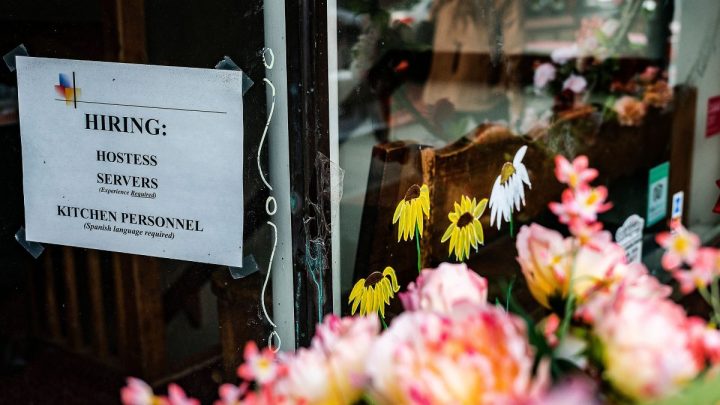
Job openings fall in a possible sign of the elusive “soft landing”
Job openings fall in a possible sign of the elusive “soft landing”

Some big news out of the Job Openings and Labor Turnover Survey released Tuesday by the Bureau of Labor Statistics: Job openings in the U.S. fell by more than 600,000, but the number of people hired and let go stayed about the same.
Fewer job openings in normal times might be not great news, but right now, it is — cautiously speaking — a good sign.
For inflation to not be crazy, wage growth has to also be not crazy. That is why the Federal Reserve would like to see a cooler labor market. To be clear: cooler, not cold.
The problem is that when the Fed has fought inflation before, it’s usually ended up freezing the labor market and sending the economy into recession. The hope is that this time around, we’ll get a labor market that is just right, inflation comes down to being just right, and the economy lives happily ever after (until the next crisis).
“This report really shows the soft landing we’ve all been hunting for so many months,” said Layla O’Kane, a senior economist at Lightcast.
In the last two months, new job openings have fallen by 1.3 million. Meanwhile, layoffs have not surged. That’s an encouraging sign because it shows a cooling labor market without the mass layoffs.
But what about all those layoffs in tech? Just three weeks ago Meta said it would lay off another 10,000 workers. Then Amazon said it would lay off another 9,000.
“This is not an economywide thing, or even from this data a tech sectorwide thing,” O’Kane said.
There’s evidence that some workers are moving out of sectors that ramped up in the pandemic — like transportation and warehousing — and going into sectors that haven’t yet recovered — like hotels and restaurants. That would be a sign of the economy coming into balance. On the other hand, when it comes to fighting inflation, we’re really just a mile into the marathon.
“Across most metrics, the labor market still looks really tight,” said Matthew Luzzetti, chief U.S. economist at Deutsche Bank. “You still have 4 million more job openings than unemployed individuals. That measure before the pandemic was closer to 1.2 million.”
Many companies are still ravenous for workers. Before the pandemic, there were around 7 million openings; today, there are just under 10 million.
“The number itself is still very big,” said Lee Ferridge, head of macro strategy in North America for State Street. “It’s a long way to go before you can say the labor market is in balance — a long way to go.”
But, on the other other hand, if the number of job openings keeps declining at this pace, it could return to pre-pandemic levels by the summer.
There’s a lot happening in the world. Through it all, Marketplace is here for you.
You rely on Marketplace to break down the world’s events and tell you how it affects you in a fact-based, approachable way. We rely on your financial support to keep making that possible.
Your donation today powers the independent journalism that you rely on. For just $5/month, you can help sustain Marketplace so we can keep reporting on the things that matter to you.

















